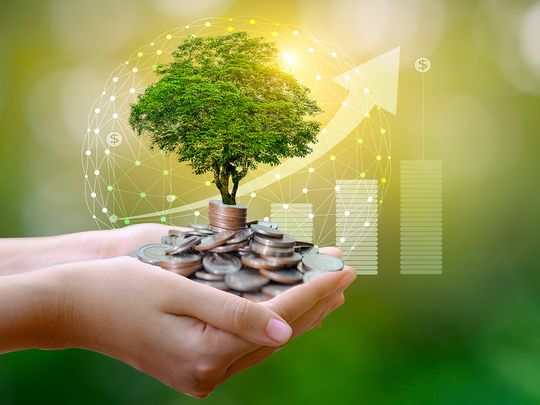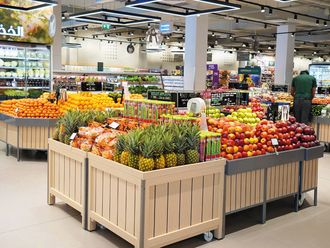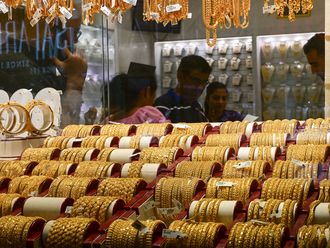
Dubai: As global concerns of climate change brought on an increased focus on saving the environment and sustainability, there has been a rush in what is commonly referred to as ‘green loans’. What are such sustainability-linked loans and what do these entail for you?
“We are seeing an increased focus on ‘green’ loans,” explained Anil Pillai, a consumer banking analyst based in the UAE. “A hot topic in the loan markets, they are relatively recent but volumes have doubled to over $200 billion (Dh735 billion) in 2022 from $100 billion (Dh367 billion) in 2018.
“A ‘green’ loan rewards borrowers by offering lower interest rates compared to average loans, which potentially reduces the amount of fees you could be paying and also get additional funding for extra energy-efficient additions to what you plan on using the borrowed funds for.”
Simply put, when the borrowed amount of a loan is spent on climate-friendly or resource-saving purposes or investments, such a loan is considered ‘green’. In other words, it is any type of loan made for the purposes of financing a ‘green project’.
‘Green projects’ are focused on renewable energy, energy efficiency, pollution prevention and control, sustainable management of natural resources, biodiversity conversation, sustainable water management, clean transport, or building green buildings.
How do green loans benefit real estate investors?
“The use of green loans and sustainability -linked loans can particularly help real estate investors with long term horizons achieve their financial objectives sustainably,” explained Rajesh Markara, an Abu Dhabi-based debt advisor.
“In the context of real estate, an example would be for the loan proceeds to be applied to build an eco-friendly building. Borrowers investing in green initiatives must tell the sustainability objectives of their projects to their lenders and show how the green project aligns with such a strategy.”
Markara further added that the proceeds of a ‘green loan’ should be credited to a dedicated bank account or otherwise tracked by the borrower so as to “maintain transparency and for keeping a track record that the integrity of the green loan was kept intact”.
“All are talking about investing in decarbonisation and net zero, and all that requires funding and ‘green’ funds offer the liquidity that pay for it,” added Pillai. “The banks are right to see the business opportunity there. They are tapping into the increase in climate consciousness.
“Financial institutions are also coming under more pressure to be green. As some activities are greener than others, there may be questions around just how green a lending product is. You can call just about anything green, it’s a very broad term. This is why each is defined by what it is used for.”
Green loan alternatives: How else can you invest?
Aside from borrowing funds for environmentally friendly causes with green loans, you can buy green bonds directly from issuers, such as governments, corporations, or banks, or through funds or exchange-traded funds (ETFs) that specialise in green investments, suggested Markara.
(By buying a ‘green bond’, you're giving the issuer a green loan, and they agree to pay you back the face value of the loan on a specific date, and to pay you periodic interest payments along the way, usually twice a year. ‘Green ETFs’ focus on eco-friendly companies, industries, or investment themes.)
“Green bonds and ETFs have been proposed as one major instrument to finance climate investments and accelerate global energy transition,” said Brody Dunn, an investment manager at a UAE-based asset advisory firm.
Going green is always a win-win. Just as switching to clean energy products help you save money on your utility bills, green or sustainable loans reward borrowers
Verdict: Are green loans a financially sustainable investment?
Green loans or sustainability-linked financing are significantly less risky than non-sustainable ones, a study by US-based financial research firm Moody's of over 8,000 loans worldwide recently found. But are they sustainable to you financially?
“The rise of green loans signal the early stages of a fundamental shift in the wider economy, so by borrowing you invest in global green initiatives, you not only contribute to an eco-friendly future, but you also get profitable returns for doing so – at a value-added lower cost,” added Dunn.
“Going green is always a win-win. Just as switching to clean energy products help you save money on your utility bills, green or sustainable loans reward borrowers with not only lower interest rates but also improves your chances at a larger loan, but that also depends on how ‘green’ the loan uses are.”
As green finance will continue to play a vital role in tackling environmental and climate issues, driven by demands from regulatory and industry bodies, investors, and shareholders, green loans are widely expected to serve its purpose, not only as means to funds but also as worthwhile investment.










